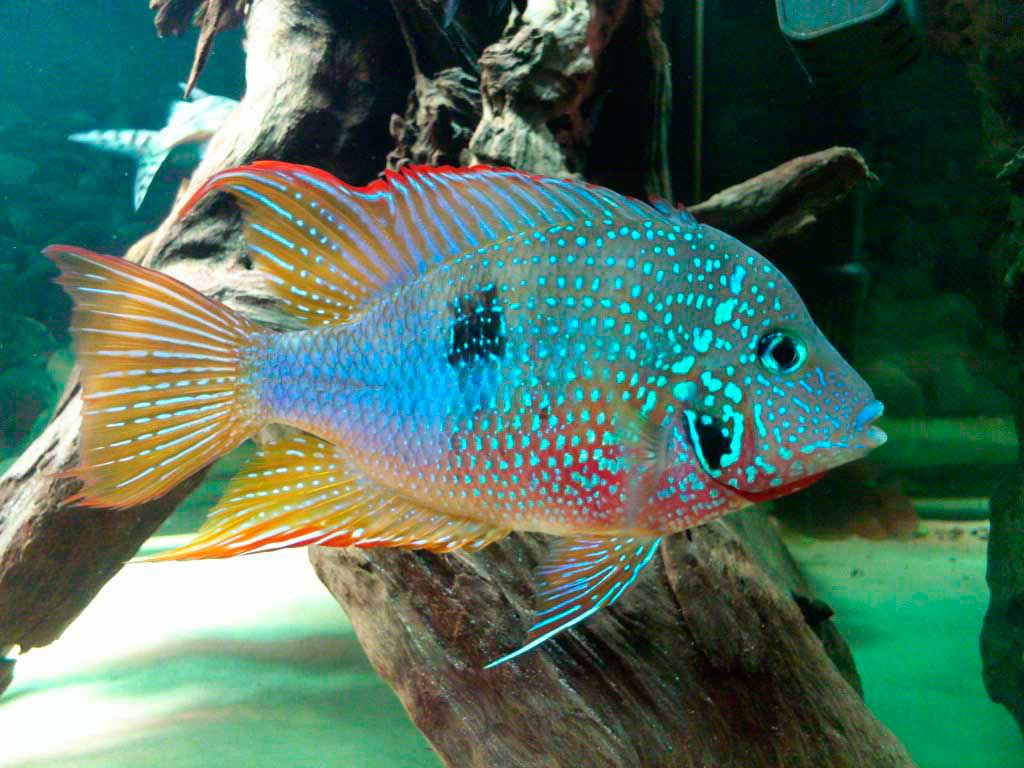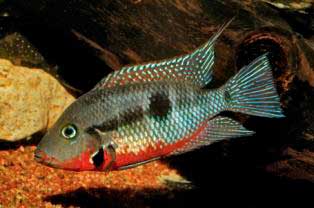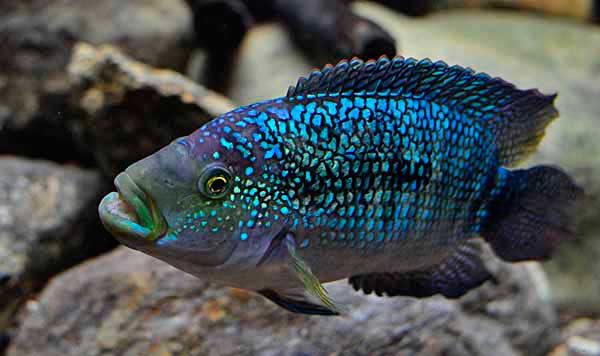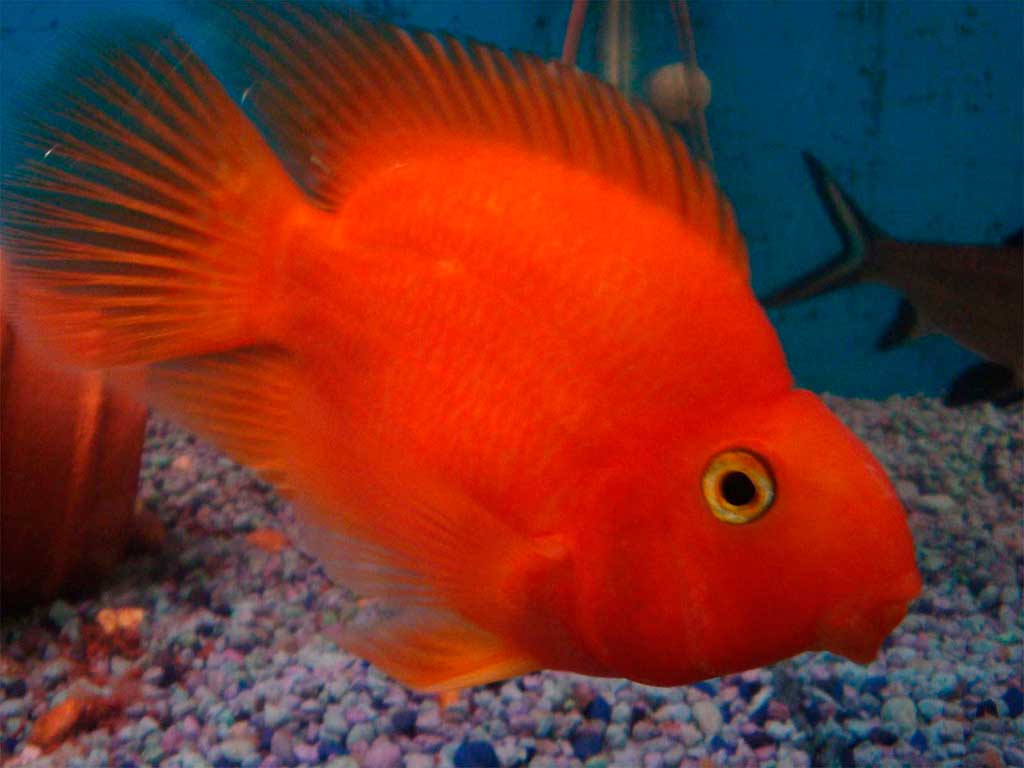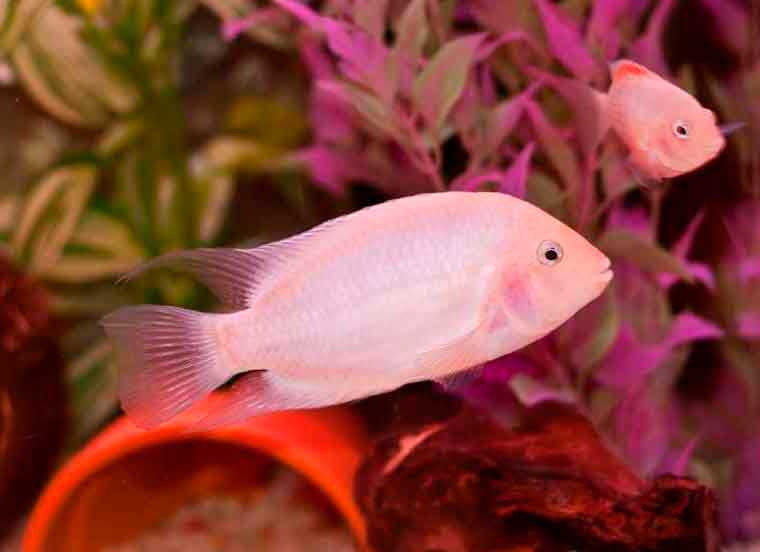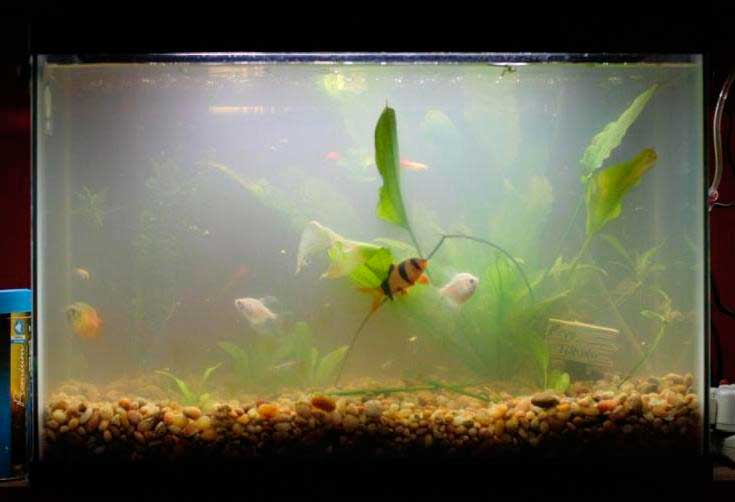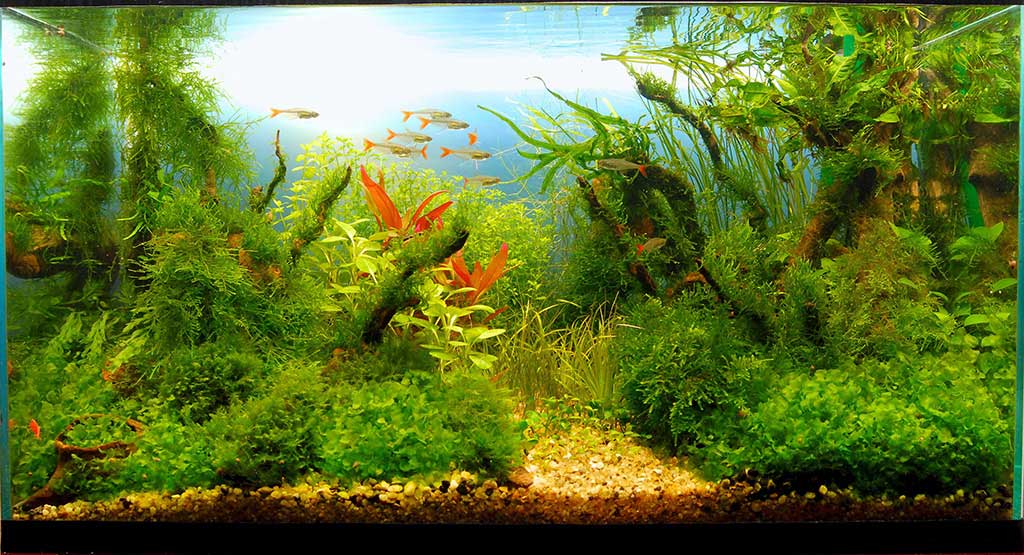Eliot’s cichlasoma is a very beautiful fish very similar in coloration to the Meeki cichlasoma. Seeing it for the first time it is easy to confuse with C. Meeki. Meeki. However, it is a different species, differing as a larger area of purple coloration on the abdomen, and a higher required temperature for maintenance, as well as some features of species behavior. Which fish is more beautiful? I do not know! For taste and color, as you know, there are no comrades. I like both species.
| classification | |
|---|---|
| kingdom | Animals |
| type | Chordates |
| class | Radial fish |
| division | Perch |
| Family | Cichlids |
| genus | Cichlasoma |
| species | Thorichthys maculipinnis |
Synonyms :Cichlasoma ellioti, Thorichthys ellioti, Thorichthys maculipinnis
Thorichthys ellioti was described in 1904 (Seth Eugene Meek). It was with this name fish was known to a large number of aquarists. But some time ago it became known that the Austrian zoologist Franz Steindachner described this species back in 1864 and called it Thorichthys maculipinnis.
Habitat
Eliot’s cichlazoma inhabits clean rivers in Mexico as well as Guatemala. Keeps in groups in shallow water near the shore. During spawning groups are divided into pairs, each of which occupies a territory radius of up to 15 centimeters and protects it. The territory of another pair may be in close proximity to neighbors. That in the aquarium content makes it necessary to clearly zone the bottom with the help of large stones, grottos, rocks. This will facilitate the delineation of the territory, which will prevent unnecessary scuffles.
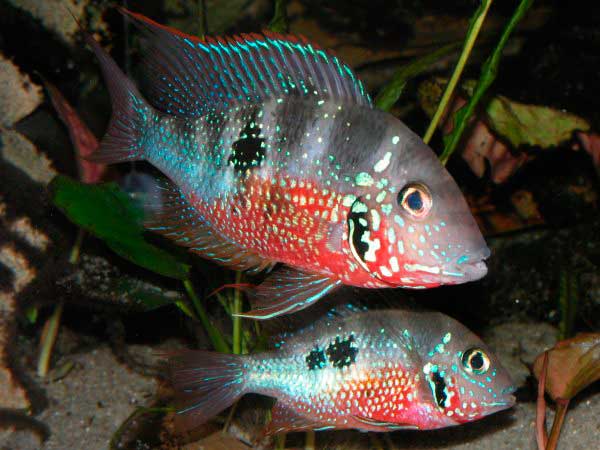
Eliot’s cichlasoma description
The body is tall and flattened at the sides. Can reach a length of up to fifteen centimeters. The head is somewhat oblong, the mouth is terminal, the lips are thick, and the eyes are large, the dorsal fin extends to the base of the caudal fin, ends in a filament and has a purple border. The paired fins are transparent. Body coloration from olive to gray with emerald sparkles scattered throughout the body. Gill covers abdomen and anterior half of the body has purple coloration. The species is monogamous. Life expectancy at good keeping is about fifteen years.
Gender differences
Males are somewhat brighter and larger than females. The latter have a black spot on the dorsal fin approximately above the pelvic fin. In males, this spot is weaker or completely absent. In the fry age, it is almost impossible to distinguish individuals by sex. And like most cichlasmas, they choose a mate from an early age. Therefore, you should buy a flock of 6 – 10 fish. After the formation of pairs of them should not be broken, and the fish that have not found a couple, should be or drop off or give into good hands. Maybe, getting into another “collective” they will be luckier, and they will find their fate there.
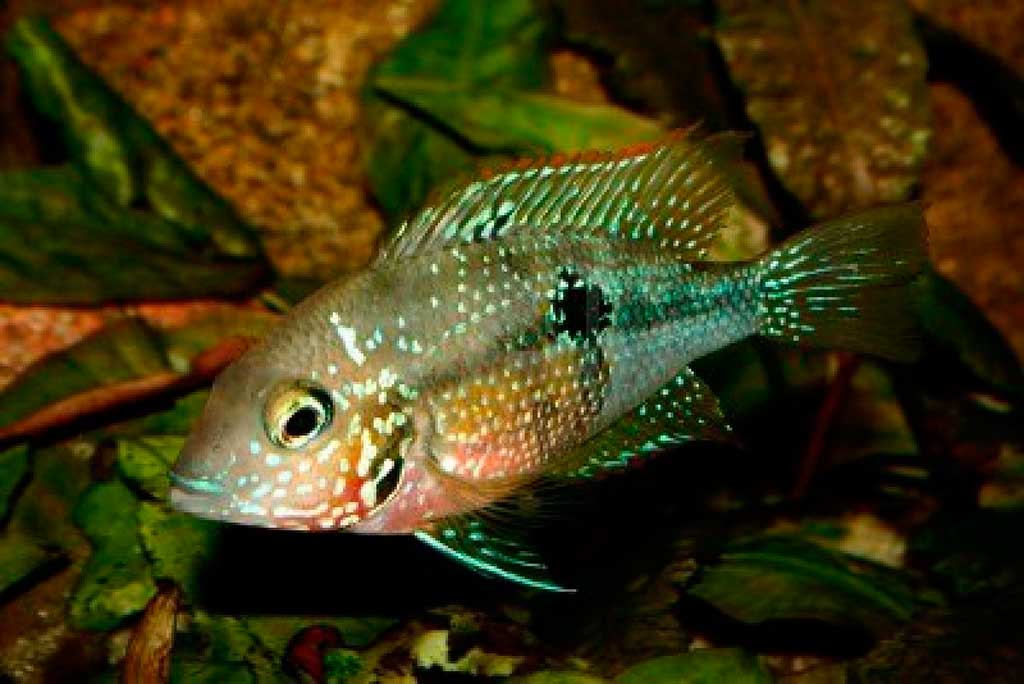
Eliot’s cichlasoma content
Content can be labeled as medium difficult. The main points to which you should be prepared, breeding these beauties – the need for a relatively large aquarium, biological filter equipment, weekly 30% water change regardless of the presence of biological filtration, relatively high comfortable temperature.
Aquarium volume
To keep Eliot’s cichlasoma requires a capacity of 100 liters per adult pair.
Грунт
Prefer light colors to imitate the bottom of the natural habitats of this species. Although on a dark background, these fish also look very spectacular. For the ground should be used fine gravel, small pebbles or a mixture of them. It is desirable to zone the bottom with large stones or rocks and grottoes made up of them.
Plants
Large, hardy plants that are resistant to digging are suitable. These can be plants with a well-developed rhizome. Or plants that do not need rooting at all, such as Elodea canadensis. Large echinodorus, anubias can take root well. Of the more unpretentious plants, you can try to use Wallisneria spiralis.
Water parameters
Eliot’s cichlazoma is a rather delicate and demanding creature. The water temperature should be maintained at twenty-four to twenty-six degrees Celsius. Therefore, their home should be equipped with a heater with automatic temperature regulation. The hardness of the medium should be within the range of 8 – 15°dH. The acidity of pH should be about 7. As for the products of vital activity, such as ammonia and nitrites, they should try to keep them at a minimum level.
Lighting
The lighting should not be too bright. Bright lighting can be a stressor for these fish, as well as their emerald sparkles will certainly shine brighter in overly bright lighting, but may distort their color.
Aeration Filtration
As mentioned above, it is necessary to equip the tank intended for Thorichthys maculipinnis with a filter, and it is also necessary to provide additional artificial aeration, if it is not provided by the filtration system. Given the tendency of all cichlids to dig over the soil, the equipment of a bottom filter seems inappropriate. Either internal filters of the jar with a bubble filter or an external filter would be more appropriate.
Eliot’s cichlasoma Compatibility
Cichlasoma Eliot has a relatively peaceful disposition, it is easy to get along with fish of commensurate size and almost all types of catfish. It should not only be placed in the same territory with them fish with veiled fins.
Nutrition
In the wild, Eliot’s cichlasoma feeds on small crustaceans, detritus, algae. In the aquarium content can be fed daphnia, moths, small artemia. It is desirable to give as much plant food. Feed better twice a day – morning and evening. Once a week you can arrange a day off, that is, do not feed them, giving them the opportunity to pick up leftovers.
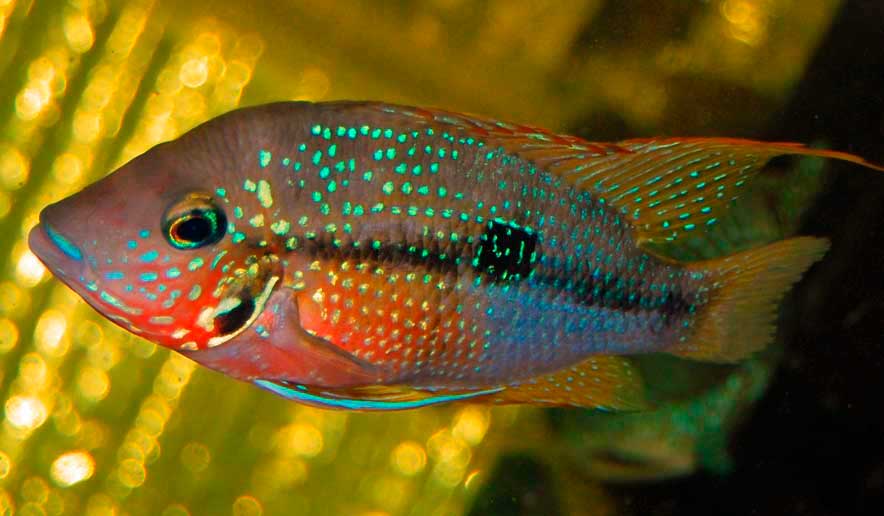
Eliot’s cichlasoma breeding
Spawn can spawn in a common aquarium. Occupying a favorite area of the bottom, making a small depression in it and thoroughly cleaned pebbles from dirt. The eggs are hatched on a flat clean cleaned surface. The offspring are cared for by both parents. During spawning eat little. If spawning began in a common aquarium, do not hurry to transfer the eggs with the producers in a “safe” spawning ground. Such a transfer can be stressful for the parents, which will end with the destruction of the clutch.
Protect the owl nest they know how, so the eggs have a better chance of turning into fry, if a person does not interfere with the natural course of events. After the fry emerge, they can be drained with a hose into a grow-out tank. The starter food for young fish is Artemia nauplii. As the fry grow, they are transferred to larger types of food.
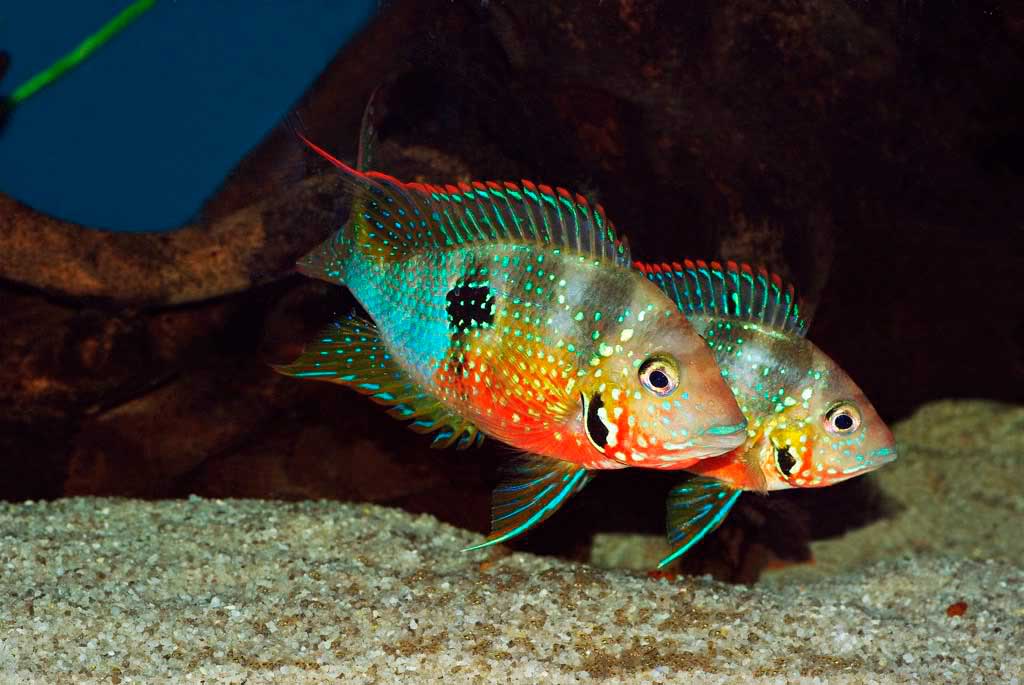
Of course, it is more pleasant and quieter at heart when spawning takes place in the planned aquarist timing and in a specially prepared by him spawning aquarium. Such a spawning tank is not very different from the aquarium for maintenance. Equip it, as well as the main vessel. Water temperature is increased gradually to twenty-eight degrees Celsius. Stimulate spawning can be replaced by replacing part of the water with fresh tempered water.
This is such an interesting fish Eliot’s cichlasoma. The relative complexity of keeping this species is more than repaid by its magnificent coloration and behavioral features, which can be watched, without tearing off, hours on end.
